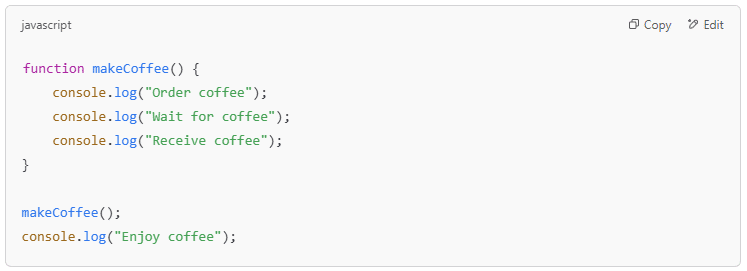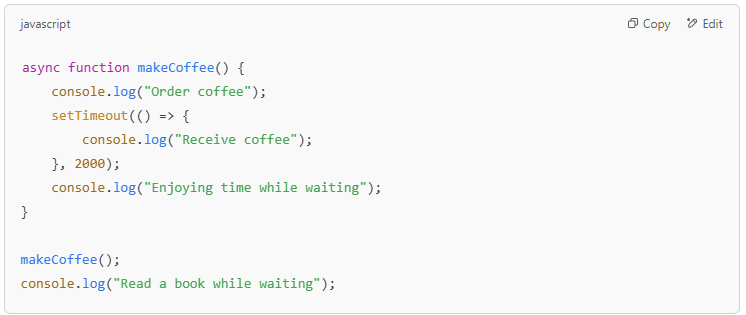









Every developer, at some point, faces the challenge of execution flow. Whether you’re building a simple script or architecting a high-performance system, how your code executes directly impacts speed, efficiency, and user experience.
This brings us to one of the most fundamental concepts in programming: synchronous vs. asynchronous execution. While synchronous execution follows a predictable step-by-step order, asynchronous execution allows tasks to run independently, often improving performance and responsiveness.
But when should you use synchronous programming, and when does asynchronous execution become the better option? And more importantly, how do real-world applications leverage both? Let’s break it down.
Synchronous programming is the most intuitive execution model. It follows a simple rule: each task runs in sequence, and the next one won’t start until the previous is completed. While this makes debugging and logic easier to follow, it also means that long-running operations can slow everything down.
Think of it like a coffee shop where there’s only one barista. You order your coffee and stand at the counter waiting. Until your coffee is made and handed to you, the barista won’t take the next order. This strict one-by-one execution is exactly how synchronous programming works—efficient for small, predictable workflows but inefficient when tasks take too long.
Code Example: Synchronous Execution in JavaScript

Output:

Everything executes in exact order, with no skipping or overlap.
When Does Synchronous Execution Work Best?
However, for applications that need to handle multiple tasks at once—like web servers or real-time systems—synchronous execution becomes a bottleneck.
Asynchronous programming allows tasks to run independently, meaning your program doesn’t have to wait for one task to finish before moving on. This is especially useful for tasks that involve network requests, file operations, or background processing.
Let’s go back to the coffee shop. This time, instead of waiting at the counter, you order your coffee and sit at a table. The barista keeps taking other orders while preparing your drink. When it’s ready, they call your name, and you pick it up. That’s how asynchronous programming works—tasks run in the background without blocking the rest of the process.
Code Example: Asynchronous Execution in JavaScript

Output (with a delay)

The program doesn’t stop to wait for the coffee; instead, it continues executing other tasks.
When Does Asynchronous Execution Work Best?
Although asynchronous execution improves efficiency, it introduces complexity—managing dependencies and debugging can be tricky.
| Feature | Synchronous Programming | Asynchronous Programming |
| Execution Flow | One task at a time, sequential | Multiple tasks run independently |
| Performance | Slower for time-consuming tasks | Faster for handling multiple tasks |
| Blocking Behavior | Blocks execution until a task is finished | Non-blocking execution |
| Best For | Small scripts, predictable workflows | Web servers, real-time applications, I/O operations |
| Complexity | Easier to understand and debug | Requires handling concurrency |
Tasks must execute in strict order (e.g., writing data to a database in a transaction).
Simplicity matters more than speed (e.g., running basic scripts).
Blocking behavior is acceptable, such as in command-line utilities.
Example: Processing payments in an e-commerce system, where transactions must happen one at a time to prevent data corruption.
Performance and responsiveness are crucial (e.g., handling web requests).
Tasks involve waiting for external resources (e.g., fetching data from APIs).
Background tasks need to run while other operations continue (e.g., sending email notifications).
Example: Social media platforms like Instagram and Twitter use asynchronous programming to load content in the background, ensuring a smooth scrolling experience.
Database Transactions: Ensuring data integrity by executing operations in order.
Command-Line Scripts: Where simplicity matters more than speed.
Simple Algorithms: Processing small amounts of data with predictable execution.
Web Development: Handling multiple user requests simultaneously (e.g., Node.js web servers).
Real-Time Applications: Chat apps, live notifications, and financial dashboards.
Cloud Computing & Microservices: Scaling applications efficiently using AWS Lambda, Google Cloud Functions, and Azure Functions.
Big tech companies like Netflix, Google, and Facebook rely heavily on asynchronous execution to serve millions of users without performance drops.
Synchronous and asynchronous programming aren’t competitors—they’re two tools for different situations. While synchronous execution is easy to understand and ensures order, asynchronous execution boosts performance and responsiveness.
Modern applications often combine both approaches to balance efficiency and maintainability. For example:
At ITC Group, we specialize in building high-performance applications that leverage both synchronous and asynchronous programming models. Whether you’re developing a scalable web service or optimizing backend systems, choosing the right execution model is key to success.
Learn more on other topics:
Stay ahead in a rapidly changing world with our monthly look at the critical challenges confronting businesses on a global scale, sent straight to your inbox.